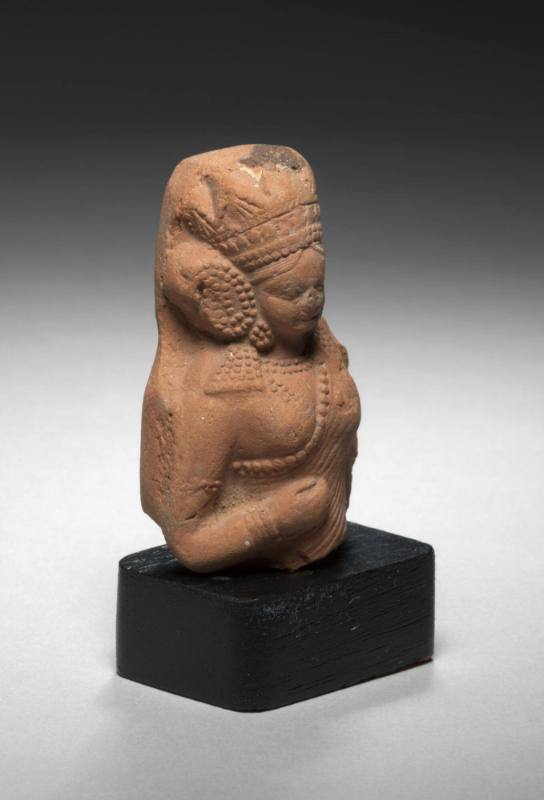

Object Details
Culture
Veracruz, Mexico
Date
ca. 600–900
Medium
Stone
Dimensions
16 x 15 inches (40.6 x 38.1 cm)
Credit Line
Acquired through the Membership Purchase Fund
Object
Number
73.013.001
The ceremonial stone yokes of the Classic Period on the Gulf Coast of Mexico were part of the paraph(…)
The ceremonial stone yokes of the Classic Period on the Gulf Coast of Mexico were part of the paraphernalia associated with the pan-Mesoamerican ritual ball game. The yokes were probably carved imitations of leather or basketwork hip-protectors and were never worn during the actual ball game. They might have been used in religious ceremonies conducted after the game. Yokes were also often buried with what seem to be decapitated and sacrificed player/warriors. The ritual aspects of this important piece of ball-game equipment have to do with fertility. Stone yokes often depict owls, felines, toads, and serpents, creatures associated with the night sky, earth, and water. This particular yoke seems to be a “toad” type, but it also has elements of the serpent and the cat in its appearance. Toads such as Bufo marinus and B. Valliceps have great symbolic power in Mesoamerica because of their transformative properties, their hallucinogenic skin, their fertility, and their skin-shedding. Skeletal remains of B. marinus have been found in Olmec ceremonial centers and in other Mesoamerican archaeological sites. Toads are depicted on ball-game yokes, perhaps in part as symbols of fertility and renewal. Toads are venerated for their tendency to “sing” just before the rains fall; this predictive power is prized in a society whose subsistence relies on a good yield of rain-dependent crops such as maize. The elaborate scrollwork designs on the sides of the yoke may be glyphs with a specific meaning, perhaps of water or sprouting vegetation. The ends of the yoke are decorated with carved human heads facing each other. These are possibly portraits of the lords involved in the real ball game, or of the Heavenly Twins who are often depicted engaged in the supernatural game. (From “A Handbook of the Collection: Herbert F. Johnson Museum of Art,” 1998)












